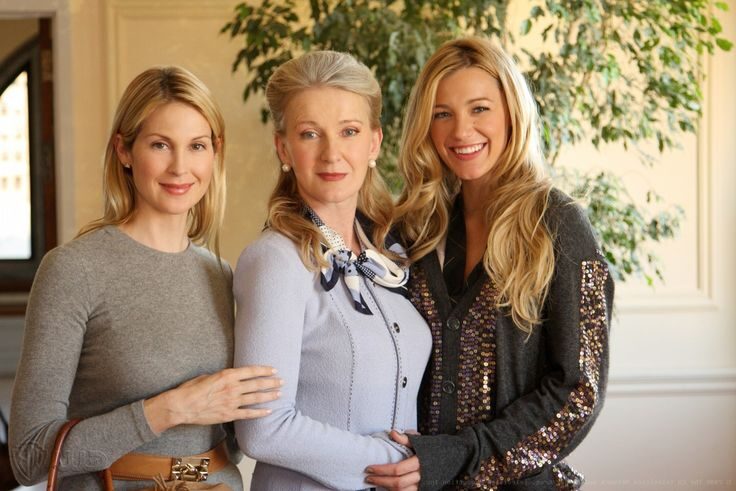As I approached my 50th birthday I began to become curious about what this third phase of life would hold for me. For many of us, middle age is this mysterious, foreign country looming on the horizon much like the wall of ice in Game of Thrones. It has always seemed a place that you are exiled to, where sacrifices are demanded and there isn’t much fun to be had. Except now, I was on this metaphorical journey north and was filled with trepidation and anxiety. I needed the wise words of others who had gone before—roadside helpers that could take me into their cottage for a meal and a story before sending me, refreshed and emboldened, back on my way.
It wasn’t until I had read quite a lot on the subject of the midlife of women that I realized what I had really needed was reassurance. Much like my teenage years which were spent scouring magazines like Sassy and Seventeen for clues on how to act, how to look, what to expect as a young person in the world, the works from these writers have provided me comfort that all will be ok in my middle years. Yes, this phase of life is unlike any other I have gone through but in many ways it can be the most satisfying if I know what to expect and can relax into it.
Here are three wildly different yet substantially informative books I love about enjoying midlife.
Life Reimagined: The Science, Art and Opportunity of Midlife by Barbara Bradley Hagerty.
The format of this book is one that I fully enjoyed, combining scientific data from neuroscience, psychology and biology with personal insights and stories. Barbara Bradley Hagerty was a former NPR correspondent and her reporter’s chops are on display as she investigates the reality of midlife as if it’s a breaking story. She begins in a place of fear, much like me, concerning the “crisis” of midlife and the popular belief that we will all slowly decay into nothingness. Thankfully, what Hagerty found in the data and in her case studies was something far different: if done correctly, midlife (defined as 40’s to 60’s in this book) can be the most rewarding time of all.
Hagerty states, “Researchers today who have examined people across their life spans, peered inside their brains, uncoiled their hopes and fears, and observed how they deal with love and alienation, trauma and death, good and evil, say that midlife is about renewal, not crisis.”
Hagerty acknowledges that there does seems to be a dip in people’s happiness levels which she explains is universal and is “called the U-Curve of happiness. People are upbeat and optimistic when they’re young and life is ascendant; they slope down into discontent in their 40’s and early 50’s, before swooping up and growing happier right through their 70’s.”
To make the most out of your midlife years, Hagerty identifies three helpful themes:
- “Engage with verve because autopilot is death.” Hagerty is clear that blindly walking the same path we did in our earlier years is the quickest way to disease and unhappiness. “Part of midlife’s challenge,” she writes, “is to closely examine the old script—the one that family and society writes for you, the one in which you are meeting everyone else’s expectations—and see if it needs revision. The new script is tailored to your core identity—your own talents, passions, and personality—and these should shape your goals. For some, this means a major revision…For others, it means rechanneling one’s energies just a few degrees into something that gives them meaning and verve.”
- Chose purpose over happiness. Purpose is that thing that gets you out of bed in the morning, even when you don’t want to. For many of us, raising children is a major purpose. Giving back to your community or fighting for a cause are other examples. You want to invest in things that matter to you—anything outside of yourself that gives you a sense of purpose. Scary fact from Hagerty: “people with little purpose were two and a half times more likely to develop dementia than those with a mission.”
- Your thinking is your experience. “I am not arguing that whistling a happy tune will make you healthy, wealthy and wise,” Bradley Hagerty says, but “your approach to triumphs and defeats, joy and pain and losses, the stuff no one escapes…will absolutely color how much you enjoy the trip.”
Life Reimagined left me with a renewed sense of hope that midlife can be really rich and wonderful. Also the realization that whatever I do now—in my early 50’s—is really going to lay the foundation for the rest of my life. By staying engaged with family and friends, by exploring new places and learning new things, and by remaining healthy and active, I can expect to thrive for the next twenty years or so.

Excuse Me While I Disappear: Tales of Midlife Mayhem by Laurie Notaro.
This book is a hilarious and honest glimpse into the chaos that accompanies our transition into midlife. Best-selling author Laurie Notaro cuts right to the chase in this giddy memoir about women of a certain age, at times reveling in the freedom menopause brings and others clinically detailing the physical humiliations that make up her reality.
“And then one day,” Notaro writes, “your body stops working. It can be sudden, like throwing out your back while shaving your legs, and it just never goes back to normal. You live the rest of your days with a ‘bad back.’ In your thirties, a nerve pings in your hand, like someone has plucked a rubber band inside it. It’s startling and odd. In another five years, your hands start to tingle a little bit when you’re typing, and you buy a pair of hand braces to wear at night. In the next five years, you can’t open a jar, and in the five years after that, they suddenly fall asleep and you have to elicit a hearty round of applause to no one to wake them back up and make them functional again. And no one prepared me for that.”
As a fellow GenXer, I appreciated Notaro’s sarcastic and direct writing style. I cringe right along when she describes herself as punk rock-loving survivor of Hamburger Helper and Aqua Net who now has effectively disappeared from public notice. Construction workers make no comment when she walks by. Clerks in grocery stores don’t make eye contact and don’t notice if she shoplifts. Young people in restaurants would describe her as old. It’s enough to make you want to scream into the void.
And yet. Notaro finds real joy in her ability to outlast so many tragedies. There is a sweetness that comes through when she’s describing the relationship with her lovely and patient husband. The passage in which they joyride in her Mini Cooper with the top down is completely uplifting. The book ends with an ode to her aging and ailing dog Maeby and that chapter, “My Darling Girl,” might be the best of the lot.
Notaro, dog mom extraordinaire gushes, “She is a remarkable being. She is the most perfect thing ever born. She is the love of my life. And she is going to die soon…We wrap her pills with butter. I make her bacon several times a week. She can have anything she wants if these, indeed are some of her last days…I watch her as she picks the green beans that I’ve cooked for her out of her food and spits them onto the floor, and I get it. I’ve taken that as a cue when advancing into my own second (or third) act. There’s no time for shit you don’t like. Mae doesn’t like green beans. I don’t like fish. I don’t like assholes. I don’t like wasting time. I don’t want to waste any more of it.” Amen, sister.

Goddesses in Older Women: Archetypes in Women Over Fifty by Jean Shinoda Bolen.
Though I was an English major and am somewhat accustomed to thinking in metaphor and myth, I recognize that this book may not be for everyone. Jean Shinoda Bolen is a Jungian analyst and professor of psychiatry at the University of California, San Francisco and uses the framework of Goddess archetypes to explore the feminine psyche. If you liked The Hero With a Thousand Faces by Joseph Campbell, this will be right up your alley.
Here Bolen focuses on the depictions of “crone” within the goddess pantheon to explore our intellectual, mystical, powerful, and intuitive natures during midlife. Her view is that by studying the different goddesses, we can reveal different aspects of our personality and soul and, hopefully, forge a more meaningful life.
Bolen writes, “By knowing who the goddesses are, woman can become more conscious than they would otherwise be of the potentials within them that, once tapped, are sources of spirituality, wisdom, compassion, and action. When archetypes are activated, they energize us and give us a sense of meaning and authenticity.”
The goddess Hecate is a prime example. Traditionally Hecate was the goddess of midlife, the entity we meet at the crossroads when we are mulling over a big decision. She was revered and loved for her wisdom until the patriarchy turned her into an ugly hag or dangerous witch who lures people to their doom. Bolen seeks to resuscitate Hecate as a guide for women to listen to their personal insight, writing, “Whenever you tell the truth to someone else, especially if that truth shakes a premise, this moment becomes a folk in the road. Likewise, whenever you ask for the truth, Hecate is the inner wisdom that prepares you to hear it.”
Truthfully, anything by Jean Shinoda Bolen is an engrossing and worthwhile read. She has been a mainstay of Jungian psychiatry for multiple decades, and you can find many interviews, videos and podcasts in which she dispenses wisdom and charm in equal measure.
What’s good about being a crone?
I love this answer that Bolen gives in an interview when she’s asked: What’s good about being a crone? Bolen states, “It’s a phase in which you can be more authentic, more capable of making a difference in your family and in the greater world. Life gives you experience, and when you draw from it, that’s true wisdom. By the time a woman is in her crone years, she is in an amazing position to be an influence. To change things for the better, to bring what she knows into a situation, to be able to say, ‘Enough is enough.’ You don’t have to just go along with things, which is often a part of the middle years. You’re often something of a loose cannon…There’s a humor in older women-we can laugh together about how absurd life sometimes is. In the middle of really bad transitions we can find some sister to laugh with. You can’t whine and laugh at the same time.”
Happy reading!




